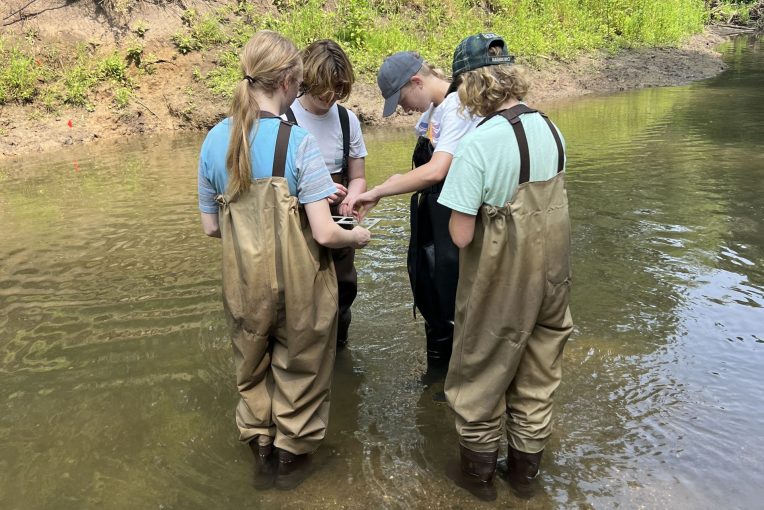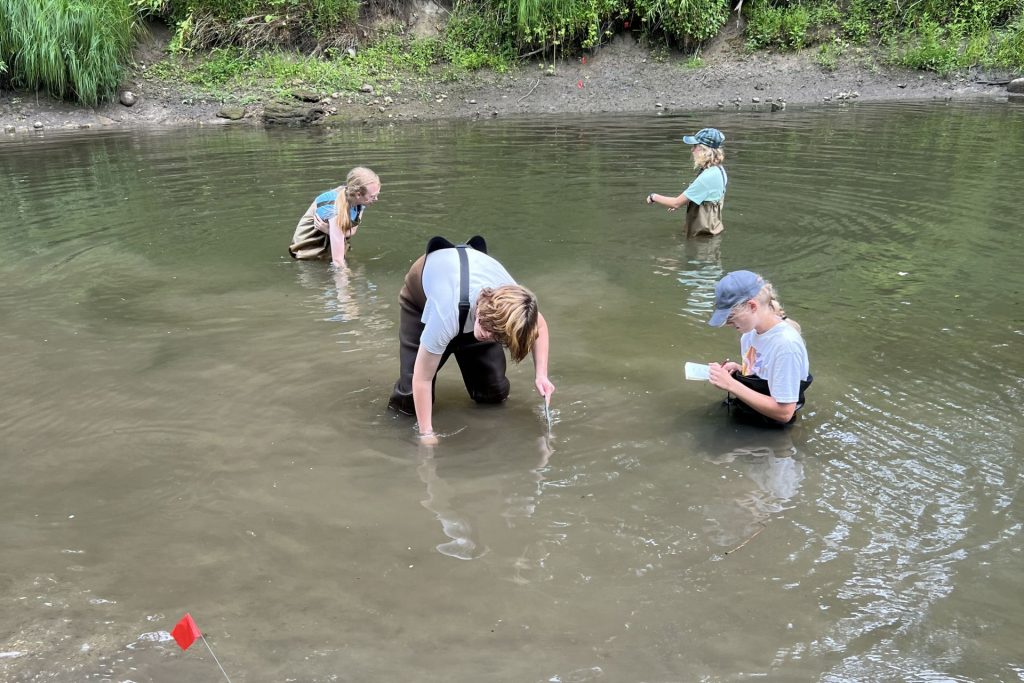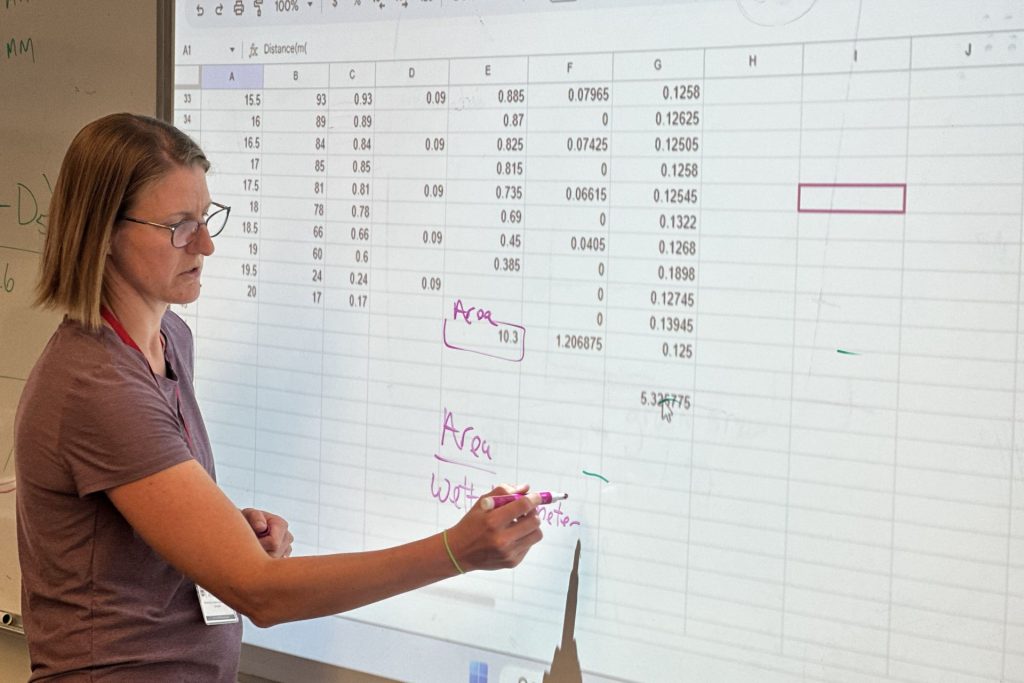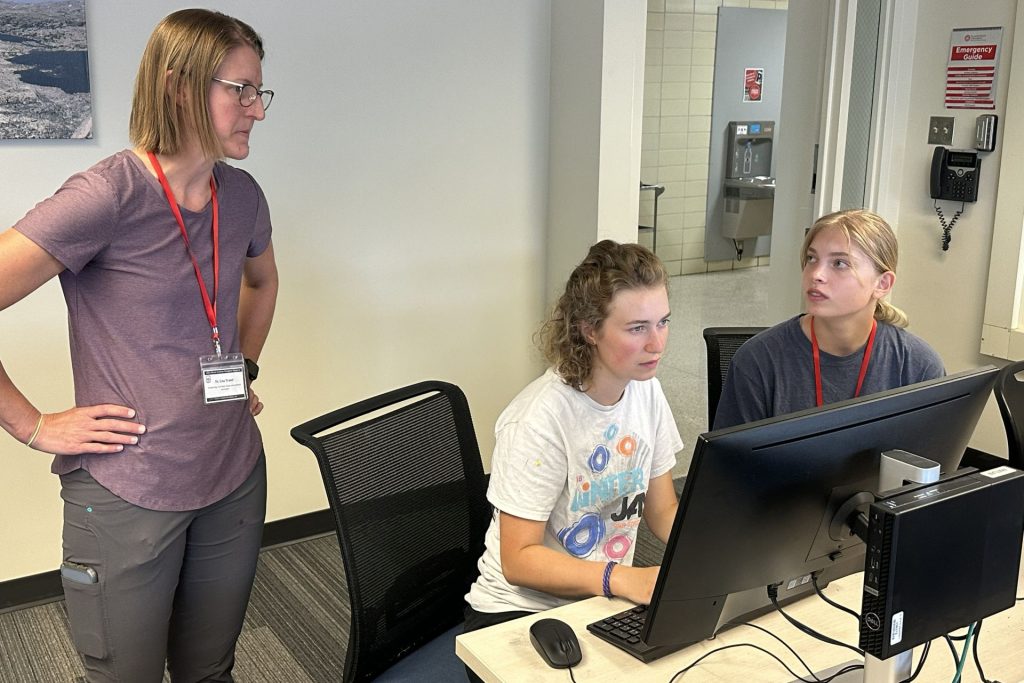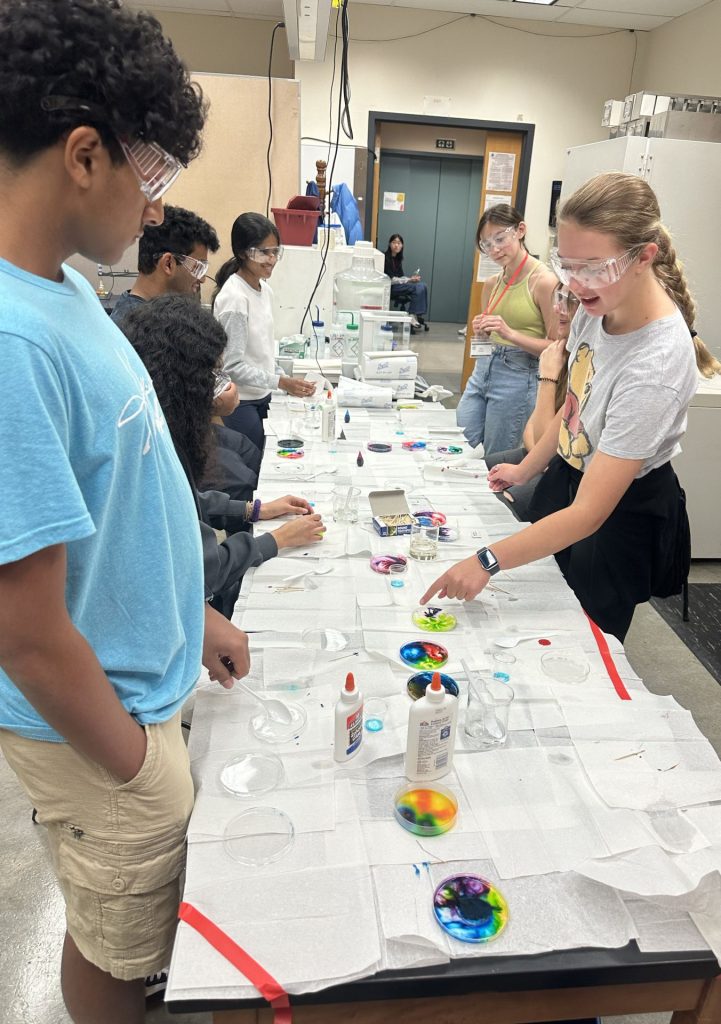High school students enrolled in Dr. Lisa Tranel’s section of the Illinois Summer Research Academy waded across the Mackinaw River as it meandered through the Merwin Nature Preserve in rural McLean County, a steady current easily detectable at their feet even through thick rubber boots.
“It felt like you were weighted down,” said Josh Stearns, of Normal, a senior-to-be at Normal West High School. “You could feel the sand going over your feet.”
After experiencing the force that moves sediment and ultimately reshapes riverbanks, Stearns and three other high school students in Tranel’s group later spent time analyzing their observations, measurements, and samples to gain a better understanding of what they experienced standing in the riverbed that day.
It was all possible through opportunities provided in the Illinois Summer Research Academy (ISRA). Now in its 13th year, the annual event sponsored by Illinois State’s Center for Mathematics, Science, and Technology (CeMaST) connects high school students with Illinois State professors and students to conduct research on and near campus. Fifty-three high school students filled nine ISRA sections conducted June 26-30, with focuses ranging from evolutionary ecology to stress resistance in pathogens to computational neuroscience.
“We host the Illinois Summer Research Academy because we want young people to experience what it is like to do research, an experience they seldom get in high school, and become excited about pursuing a STEM career,” said Dr. Rebekka Darner, director of CeMaST.
The section led by Tranel, an Illinois State associate professor, maintained a geology focus, but its work pulled from other STEM disciplines. “There’s physics involved in calculating water flow, there’s chemistry involved in water and soils and minerals in the sediments, there’s biology involved when we look at places where logs have fallen into the river and influenced sediment transport,” Tranel said. “So, it kind of encompasses all of them.”
The weeklong program offered high school participants a deep dive into a project of their choosing, giving them a glimpse of what research looks like on a university campus.
“It was different being able to go out and do this with a supervisor who really knows what she’s doing. I didn’t know how to measure a river’s velocity, but she taught us that,” said Emalee Alsman, of Bloomington, a rising junior at University High School and member of Tranel’s ISRA group. “Now, I feel like I could go out and do some of these things myself.”
Across the street from the Felmley Hall of Science Annex, where Tranel’s group analyzed its data, Dr. Marjorie A. Jones led an ISRA biochemistry section in Illinois State’s Science Laboratory Building.
Studying the single-celled parasitic organism Leishmania tarentolae, a pathogen for reptiles but not humans, students grew cells and conducted experiments to gain a greater understanding of the parasite. About 20 species of Leishmania do affect humans, however, and knowledge of those species—and treatments for the diseases they cause—are scant. Through research of Leishmania tarentolae, students proposed a new direction for development of pharmaceutical drugs to treat human Leishmania diseases.
“It’s been a cool experience and opportunity, especially because Leishmania is really understudied. Getting to do it here with a really good professor and other people at ISU is really special,” said Eesha Yadav, of Bloomington, a junior-to-be at U-High. “Not many people get to do this.”
Jones, a professor of biochemistry at Illinois State, has led a section of the ISRA almost every year since its inception in 2010. The faculty member who admits she “likes chaos” floats around her lab from group to group, offering guidance—and space.
“If I hover too much, they ask, ‘What should I do?’ and that’s not science,” Jones said. “I want them to have an opportunity—safely—to try something different and let them explore, because that’s how I got really into the sciences.”
The ISRA is open to all rising high school sophomores, juniors, and seniors. Diversity and inclusion are emphasized, as CeMaST and participating faculty members aim to showcase the opportunities in STEM fields to student participants.
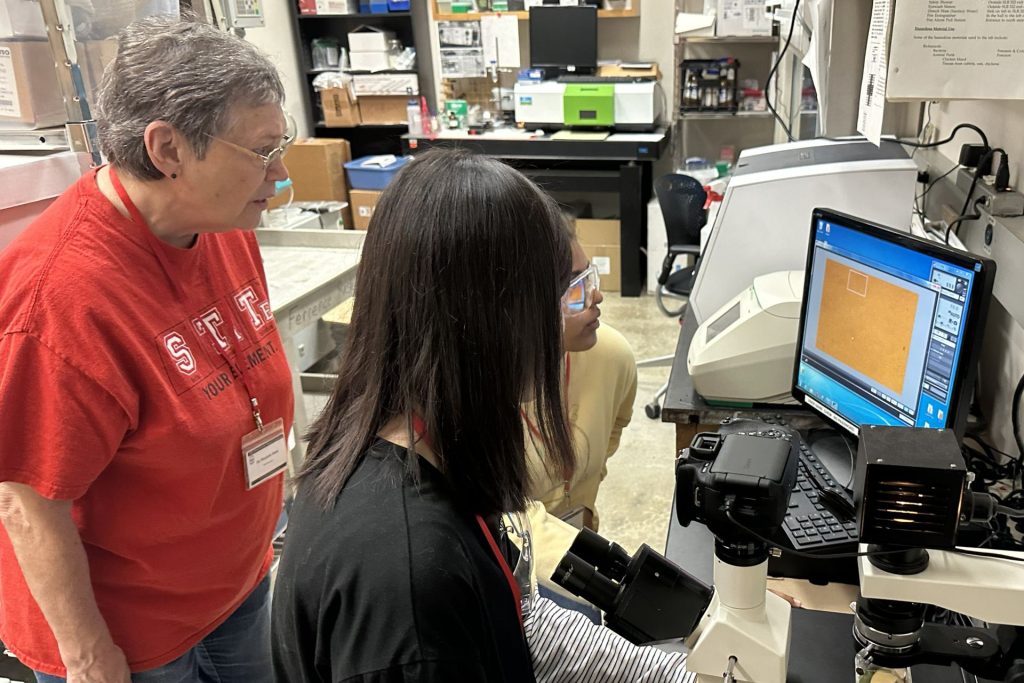
“We want to show them that people of all sorts—all genders, all racial backgrounds, and all interests—can and do become scientists, engineers, and mathematicians,” said Darner, the CeMaST director. “As ISRA participants work in our research spaces, they observe and get to know women doing computer science, Latinx and Black students doing molecular biology, and students who are low-income going to graduate school to pursue a STEM graduate degree.
“These experiences defy the societal stereotypes of who does STEM work, and by doing so, I hope we send the message to young people that it is totally acceptable—and frankly, awesome—to defy the expectations that society has set for them.”
